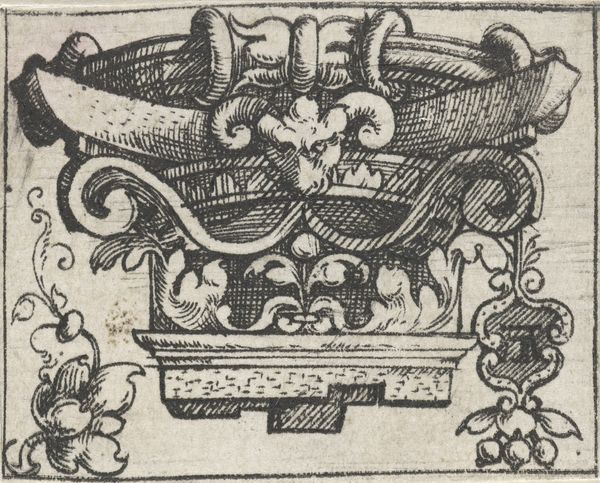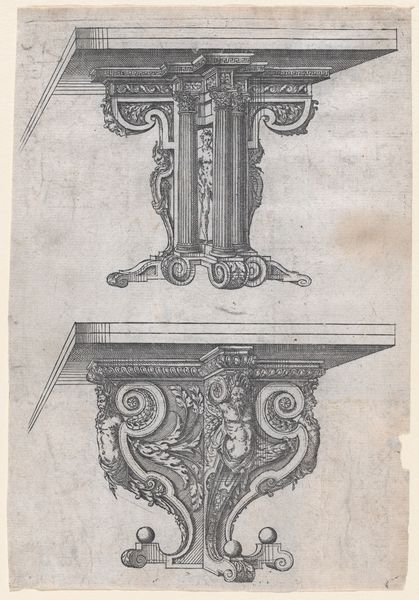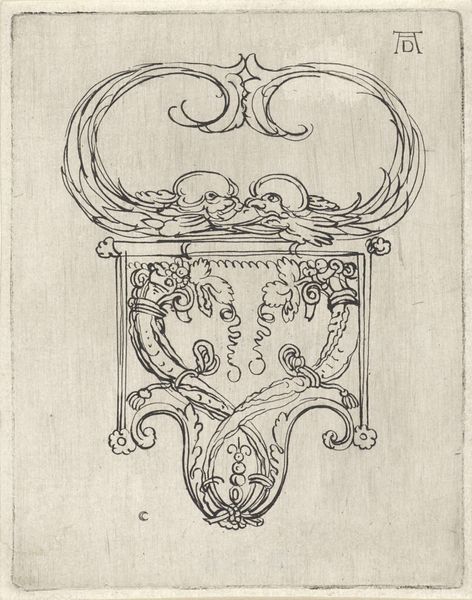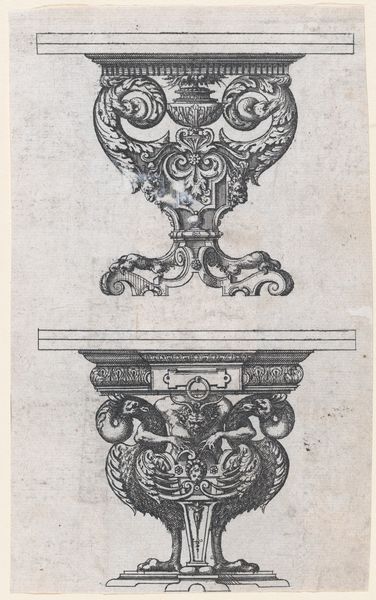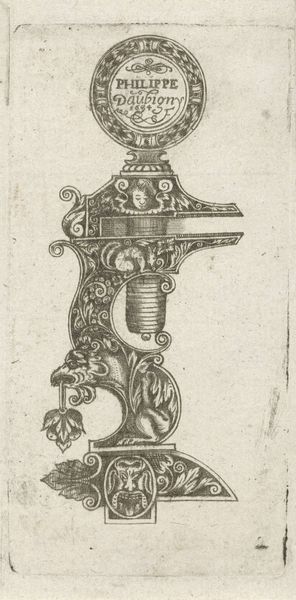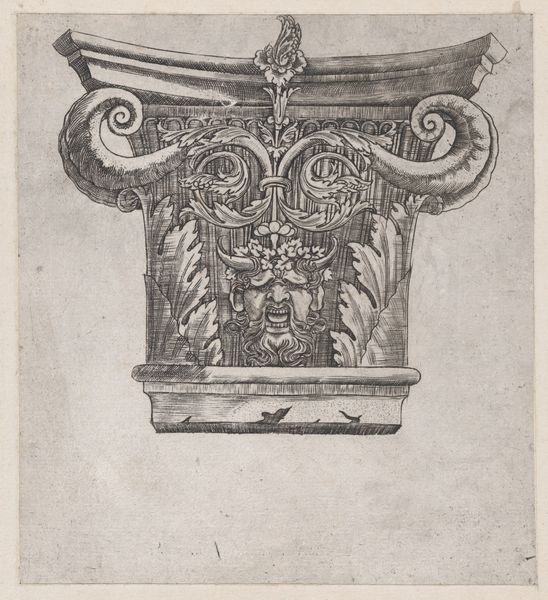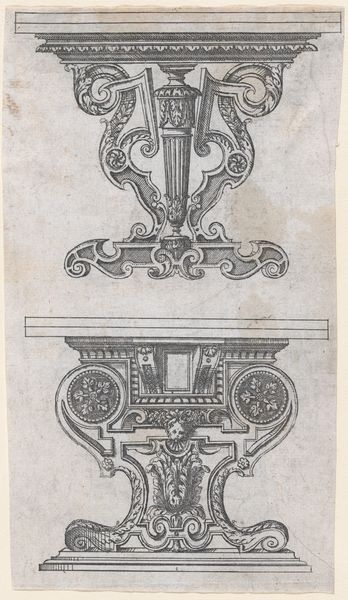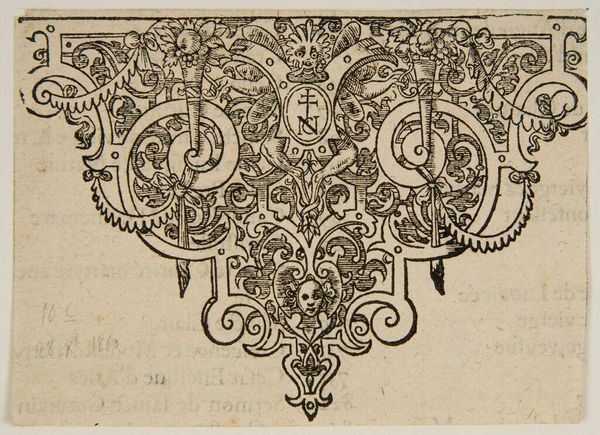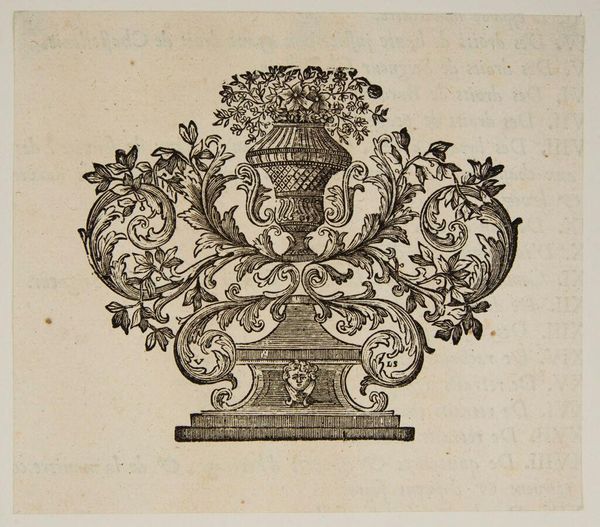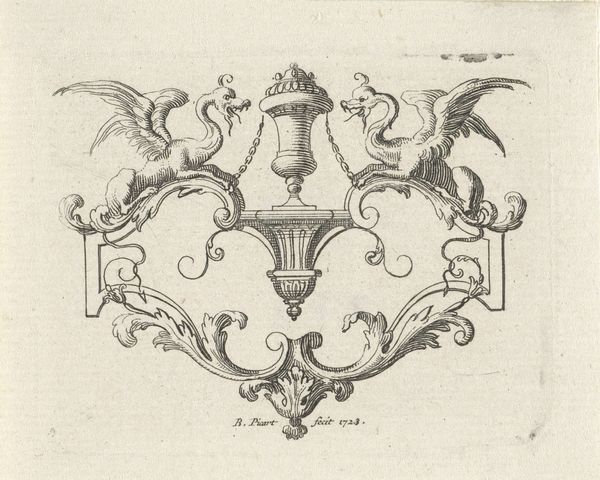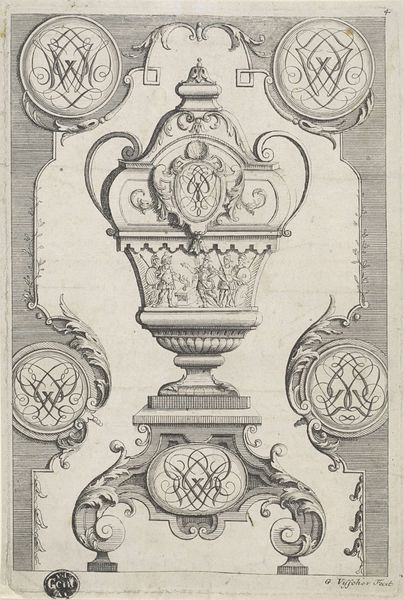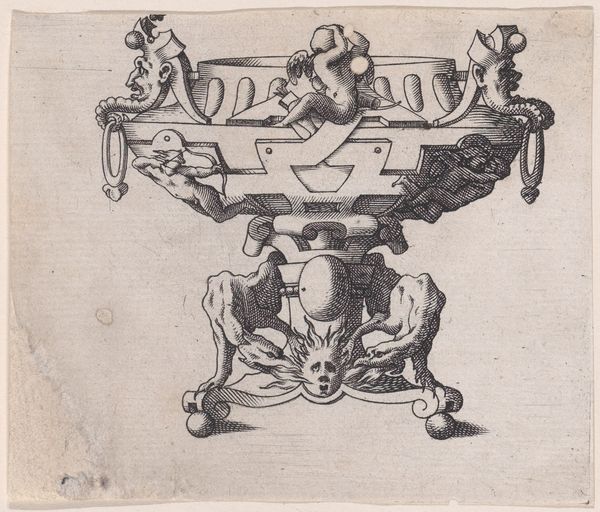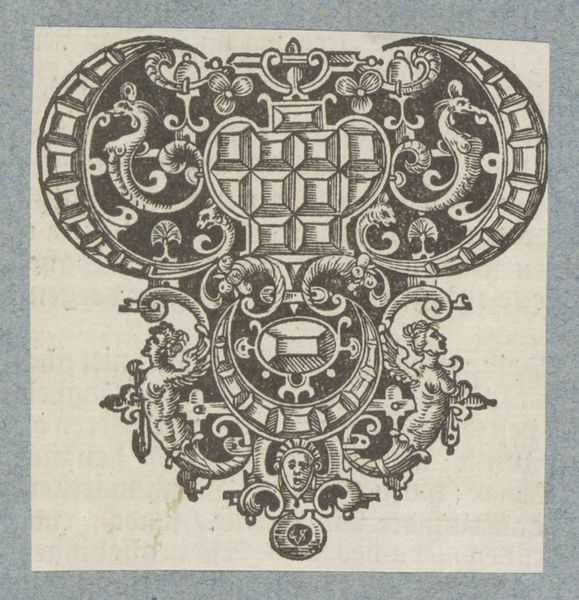
drawing, print, engraving
#
drawing
# print
#
pen sketch
#
form
#
11_renaissance
#
geometric
#
line
#
italian-renaissance
#
engraving
Dimensions: height 41 mm, width 44 mm
Copyright: Rijks Museum: Open Domain
Curator: This engraving, titled "Kapiteel, gedecoreerd met bladranken en een rozet", was created around 1535 by the artist known only as Monogrammist AL. My initial impression is that the architectural element feels solid and ornate, even in this simple print form. Editor: Indeed. The details are remarkable for an engraving of this size. Look at how the artist delineated various textures in stone using line work. Curator: Precisely. The density of lines and hatching suggests an engagement with materiality and production typical for the era. Consider how this capital, designed for placement atop a column, serves as both a structural and decorative element, mediating between vertical support and architectural expression. The medium allows a wide distribution of this particular model; the engraving effectively disseminates stylistic and material details to craftsmen, facilitating imitation. Editor: The symbolic language of the engraving draws me in. The rosette, leaves, and flourishes evoke notions of growth and nature adapted to human use. In its position above the pillar it seems to bridge earth to something beyond – it suggests power, growth, permanence. Curator: I see what you mean. The foliage can be interpreted as visual metaphor—the endurance of nature and the cyclical passage of time through seasonal growth are embodied within stone, or its representational copy in engraving. The circulation of images, after all, shapes cultural consciousness in much the same way material practice shapes buildings. Editor: Absolutely. Note the stylized interpretation of the foliage too; these motifs have evolved through centuries of architectural representation. They suggest layers of historical continuity, referencing classical traditions that were experiencing renewed interest during the Italian Renaissance. The capital embodies a certain level of historical self-awareness. Curator: I am very glad we examined Monogrammist AL's work in that manner! Editor: Me too; that really shed light on this underappreciated work of art!
Comments
No comments
Be the first to comment and join the conversation on the ultimate creative platform.
